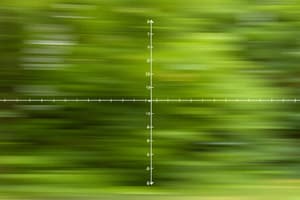Podcast
Questions and Answers
What does a distance-time graph show?
What does a distance-time graph show?
- Acceleration of an object over time
- Force applied to an object during motion
- Relationship between the displacement of an object and time elapsed (correct)
- Velocity of an object at a given instant
How are data points represented on a distance-time graph?
How are data points represented on a distance-time graph?
- As the location of the object at specific moments (correct)
- As acceleration values
- As current speed of the object
- As the force acting on the object
In a distance-time graph, what does a smooth line indicate?
In a distance-time graph, what does a smooth line indicate?
- The object is not moving
- The object is accelerating
- The object is decelerating
- The object is traveling at a constant velocity (correct)
What can distance-time graphs help us observe?
What can distance-time graphs help us observe?
How do distance-time graphs allow us to estimate velocities?
How do distance-time graphs allow us to estimate velocities?
What does a slope of one on a distance-time graph indicate?
What does a slope of one on a distance-time graph indicate?
On a distance-time graph, what does it mean if the graph crosses the y-axis at x = 0?
On a distance-time graph, what does it mean if the graph crosses the y-axis at x = 0?
What information can we derive from the equation x(t) = v₀t + 1/2at² in relation to a distance-time graph?
What information can we derive from the equation x(t) = v₀t + 1/2at² in relation to a distance-time graph?
What does a varying slope on a distance-time graph indicate?
What does a varying slope on a distance-time graph indicate?
How do distance-time graphs help us analyze an object's motion?
How do distance-time graphs help us analyze an object's motion?
Study Notes
Exploring Motion through Distance-Time Graphs
Understanding motion is critical to our daily lives, from tracking weather patterns and sports performance to navigating traffic and understanding astronomy. One of the most valuable tools we have to visualize and analyze motion is the distance-time graph. Let's dive into this concept so you can better appreciate its power and its role in helping us comprehend how objects move.
A distance-time graph, also known as a position versus time plot, presents data points showing the relationship between the displacement of an object and time elapsed during its movement. Each point represents the current location of the object at a specific moment. To create such a graph, we simply record the change in distance traveled by an object over various intervals of time, then plot these changes against their corresponding times. The result will look like this:

This figure depicts the movements of two cars traveling along a straight road. Car A travels at a constant velocity, resulting in a smooth line, while car B accelerates, causing a sharper increase in speed represented by zigzagging lines. These diagrams make it easier for us to observe trends, identify events such as starts or stops, and even estimate velocities without performing complex calculations.
These graphs allow us to draw conclusions using slopes and intercepts similar to those used with basic algebraic equations. For instance, if the slope of a linear portion of the curve equals one, then the object moving along that trajectory has maintained a constant velocity throughout the period observed. However, if the slope varies, we know there were changes in speed—either increases or decreases—during that interval. If the graph crosses the y-axis where x = 0, we determine that initially, the object was stationary before starting to travel.
Moreover, distance-time graphs enable us to find simple analytical expressions describing an object's motion. Once we recognize the shape of a graph representing uniformly accelerated motion, we can derive the fundamental equation (x(t)=v_0t+\frac{1}{2}at^2), where (x(t)) denotes the distance covered at any given time, (v_0) stands for initial velocity, (a) refers to acceleration, and (t) signifies time. In brief, these plots serve as condensed representations of entire motion sequences, providing quick insights and simplifying analysis.
In summary, distance-time graphs offer a straightforward approach for visually grasping patterns, detecting irregularities, and uncovering significant characteristics associated with different types of motion. By employing elementary mathematical concepts and techniques, they empower us to delve deeper into physical phenomena surrounding us and equip ourselves with the means to comprehend them more accurately and effectively.
Studying That Suits You
Use AI to generate personalized quizzes and flashcards to suit your learning preferences.
Description
Delve into the concept of motion using distance-time graphs, which provide valuable insights into how objects move. Learn how to interpret these graphs to understand velocity, acceleration, and displacement of objects over time. Discover the power of distance-time graphs in simplifying analysis of motion sequences.




